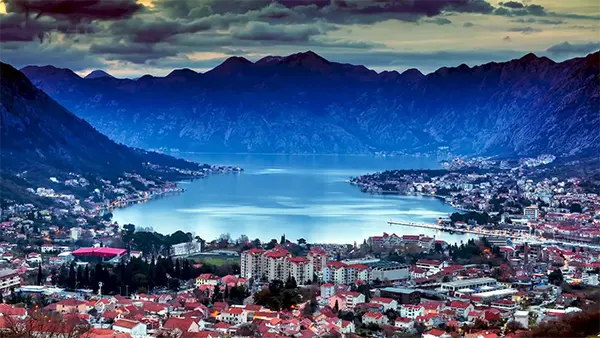
Holiday in Kotor, Montenegro — The Pearl of the Adriatic with a Medieval Soul
Kotor, nestled in the dramatic Bay of Kotor in Montenegro, is more than just a scenic destination — it is a living museum, where stone alleyways and centuries-old walls echo with stories from the past. Whether you are a lover of ancient architecture, maritime history, or simply searching for a serene coastal escape, Kotor offers a unique blend of natural beauty and cultural depth that remains untouched by mass tourism.
The Historical Fabric of Kotor
The history of Kotor stretches back over two millennia, with traces of Illyrian and Roman influence still visible in the city’s urban layout. Fortified by Venetians and prized by traders, Kotor became a jewel in the Adriatic maritime system. Its Old Town is today a UNESCO World Heritage Site, celebrated for its authentic medieval architecture, defensive walls, and intricate churches that chronicle a diverse religious past.
Walking through the labyrinth of stone alleys feels like stepping back in time. Gothic palaces, baroque churches, and Renaissance façades reflect the city’s fluctuating control by Byzantines, Serbs, Venetians, Austrians, and Ottomans. These shifting rulers left a cultural imprint that turned Kotor into a unique historical mosaic.
Among the landmarks, St. Tryphon’s Cathedral stands out, a Roman Catholic church built in 1166, with its ornate interior and stunning views from the bell towers. The Maritime Museum offers insight into Kotor’s naval legacy, exhibiting artefacts from the days when its fleets dominated Adriatic trade.
Preserved Traditions and Local Life
Life in Kotor still follows the rhythm of ancient customs. Local families maintain generational homes in the Old Town, and religious celebrations, such as the feast of St. Tryphon, bring the community together in public squares. These moments offer visitors a chance to witness authentic Montenegrin culture.
The town’s culinary scene reflects its past — seafood dominates menus, prepared with local olive oil and herbs, while bakeries serve traditional pastries like “priganice” with honey or cheese. Local wines and rakija complete the experience, often served in konobas (family-run taverns) nestled within historic buildings.
Markets around the town walls are a hub for local interaction. Here, traders sell figs, homemade cheeses, and handmade crafts, adding to the sense that in Kotor, daily life still beats to an old-world tempo.
Natural Wonders of the Bay of Kotor
The Bay of Kotor is frequently mistaken for a fjord, yet it is technically a ria — a submerged river canyon surrounded by soaring limestone cliffs and lush hillsides. This dramatic geography creates a natural amphitheatre, and Kotor lies at its centre like a hidden gem in a protective embrace.
One of the most picturesque activities is climbing the fortress of San Giovanni. With over 1,300 steps leading to a panoramic view over the bay and terracotta rooftops below, it rewards hikers with a vista that remains etched in memory. Sunrise and sunset hikes offer especially magical lighting across the water and hills.
Boat tours through the bay uncover tiny islands like Our Lady of the Rocks, an artificial islet with a richly decorated Catholic church. Sailing along the serene waters reveals hidden coves and charming villages such as Perast, where old stone houses whisper stories of seafaring glory.
Ecological Importance and Outdoor Activities
The bay area is home to unique ecosystems with endemic plant species, marine life, and migratory birds. Sustainable tourism initiatives encourage the protection of these natural resources, with hiking trails, kayak routes, and protected areas for birdwatching gaining popularity in recent years.
Outdoor lovers will appreciate activities like stand-up paddling, swimming in secluded beaches, or renting bicycles to explore the scenic coastal roads. The peaceful environment makes Kotor a preferred destination for travellers seeking rest and connection with nature.
Eco-conscious lodgings and tours now play a central role in preserving Kotor’s environment. Local businesses collaborate to reduce plastic usage, protect marine habitats, and educate visitors on responsible tourism.

Modern Travel Tips for Visiting Kotor
Travelling to Kotor is most convenient via Tivat Airport, located just 8 km away, or from Dubrovnik, Croatia, a 90-minute drive. Entry to the Old Town is free, although summer months see higher foot traffic from cruise ship passengers, so early morning or late evening visits are ideal for quieter experiences.
Accommodation options range from budget-friendly hostels within ancient walls to boutique hotels housed in restored palaces. Booking in advance during peak seasons (June to August) is advisable, while spring and autumn offer milder weather and fewer crowds.
Connectivity is reliable, with Wi-Fi widely available and local SIM cards easy to acquire. Montenegro uses the euro as its currency, despite not being part of the EU, and prices in Kotor remain affordable compared to Western European coastal cities.
Safety, Etiquette, and Local Laws
Kotor is considered safe for tourists, with low crime rates and helpful locals. Basic precautions apply — such as safeguarding valuables and avoiding unmarked hiking paths at night — but violent crime is rare. Tap water is safe to drink, and healthcare services are available in nearby towns.
Respect for local culture is key. Modest attire is expected in religious buildings, and photography inside churches often requires permission. A friendly “Dobar dan” (Good day) is appreciated when entering shops or speaking with locals.
Smoking is restricted indoors in most establishments, and drug offences are taken seriously. Travel insurance is highly recommended for any hiking or boating excursions, and EU citizens should carry an EHIC or GHIC card for emergency healthcare.
